11 start with D start with D
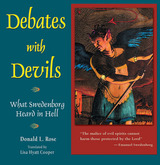
Conversations with Angels revealed the wisdom imparted to Swedish scientist-turned-seer Emanuel Swedenborg (1688-1772) by heavenly spirits. This companion piece presents Swedenborg's encounters with evil spirits, narratives arranged thematically by Donald Rose and newly translated by Lisa Hyatt Cooper from several of Swedenborg's works. Swedenborg experiences hell as the provision of a merciful God who seeks restraint of evil spirits that would do harm rather than vengeance or punishment of those who did evil on earth. God, according to Swedenborg, allows people to choose a life of hell, but always "bends them toward a 'milder hell.'"

Volume Two of the Bibliography contains:
· ‘Section C: Bibliographic Descriptions, 1743-1755’
Also included in the volume are an introduction; lists of abbreviations; and a glossary of bibliographical terms.
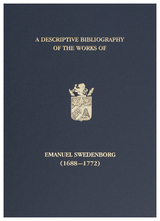
Volume One of the Bibliography contains:
· ‘Section A: Swedenborg’s Literary Corpus, 1700-1771’ (an overview and summary listing of Swedenborg’s entire literary output)
· ‘Section B: Bibliographies of Swedenborg’s Works’ (details of all previous bibliographies of Swedenborg)
· ‘Section C: Bibliographical Descriptions, 1700-1742’ (each of Swedenborg’s works written or published during this time period is treated to an introduction concerning its compositional history, followed by detailed bibliographical entries for the manuscripts, first editions, and all subsequent editions and translations of the work known to have appeared, including extracts, accompanied by lists of libraries and institutions known to possess copies of the editions in question)
Also included in the volume are a general introduction; lists of abbreviations; and a glossary of bibliographical terms.
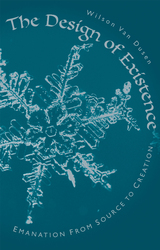
In The Design of Existence, Wilson Van Dusen offers spiritual explorers a guidebook for mystical experience, describing the inner landscape in detail. Though considering himself a scientist, Van Dusen approaches reality as a mystic, using the writings of 18th-century visionary Emanuel Swedenborg as a lens. For Swedenborg and Van Dusen, our interior realm reflects the external cosmos, which makes a mystical sense of oneness possible: "We are in a massive order, far greater than we can see. Yet we are not alien to this order. We are created out of it."
For Van Dusen's mysticism, Swedenborg is the exemplar of universality. A scientist who mastered fields as varied as chemistry, physiology, optics, and metallurgy, Swedenborg turned inward to investigate the psychological and the spiritual. He affirmed the value of other religious cultures and even wrote in gender-inclusive Latin. He had startlingly contemporary insights: he saw that the spiritual must inform everyday experience, that feelings must aid the intellect in seeking the spiritual, that the quest for the soul leads to understanding the cosmos and vice versa.
Van Dusen uses Swedenborg's ideas as the basis for a true universal mysticism. In The Design of Existence, he invites each of us to confront mystical experience as proof that we and the cosmos share a spiritual design, which orders our lives as surely as it orders the universe itself.
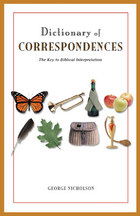
Interwoven with Emanuel Swedenborg’s commentary on the Bible is his system of correspondences, which describes the relationship between the spiritual and the physical worlds in symbolic terms. For Swedenborg, specific people, places, animals, and objects represented spiritual principles or ideas—for example, light corresponds to truth, and darkness to ignorance. Using this system, he interpreted the Bible in a radically new way, using it to illuminate the path to spiritual growth.
First compiled in the decades following Swedenborg’s death, the Dictionary of Correspondences has been continually revised and reprinted for over two hundred years. It provides an essential reference to Swedenborg’s complex thought that can be used by students, scholars, and the curious alike.
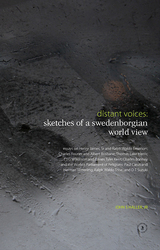
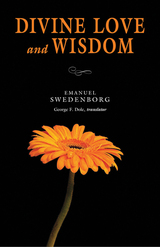
Divine Love and Wisdom has been called the most profound work of the Enlightenment scientist and seer Emanuel Swedenborg. It demonstrates how God’s love, wisdom, and humanity are reflected in creation and in ourselves, and suggests that the act of Creation is not a mystery of the past, but a miracle ongoing in every instant of the present. Like a blueprint of things unseen, Divine Love and Wisdom makes visible the hidden design of the universe, as well as the qualities of its Architect. Its vivid depiction of the spiritual mechanism of the world has impressed thinkers such as William Blake, Samuel Taylor Coleridge, Ralph Waldo Emerson, and Henry James, Sr.
The New Century Edition of the Works of Emanuel Swedenborg is a modern-language, scholarly translation of Swedenborg’s theological works. The series’ easy-to-read style retains the dignity, variety, clarity, and gender-inclusive language of Swedenborg’s original Latin, bringing his thought to life.
This portable edition contains the text of the New Century Edition translation, but not the introduction, annotations, or other supplementary materials found in the deluxe edition.
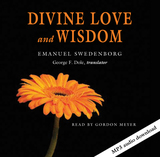
Divine Love and Wisdom has been called the most profound work of the Enlightenment scientist and seer Emanuel Swedenborg. It demonstrates how God’s love, wisdom, and humanity are reflected in creation and in ourselves, and suggests that the act of Creation is not a mystery of the past, but a miracle ongoing in every instant of the present. Like a blueprint of things unseen, Divine Love and Wisdom makes visible the hidden design of the universe, as well as the qualities of its Architect. Its vivid depiction of the spiritual mechanism of the world has impressed thinkers such as William Blake, Samuel Taylor Coleridge, Ralph Waldo Emerson, and Henry James, Sr.
The New Century Edition of the Works of Emanuel Swedenborg is a modern-language, scholarly translation of Swedenborg’s theological works. The series’ easy-to-read style retains the dignity, variety, clarity, and gender-inclusive language of Swedenborg’s original Latin, bringing his thought to life.
This portable edition contains the text of the New Century Edition translation, but not the introduction, annotations, or other supplementary materials found in the deluxe edition.

Divine Providence is one of the major works of the Enlightenment scientist and religious seer Emanuel Swedenborg. It provides a coherent and satisfying solution to what has been called “the problem of evil”: How are God’s goodness and power reconcilable with evil’s presences in the larger world and in the human mind and heart? By tackling an array of issues that commonly undermine belief in God, including war, suffering, and inequality—and by revealing the wise and loving laws that lie hidden behind these seemingly senseless phenomena—Divine Providence aims to restore our faith in the meaningfulness of the world. Despite its universal focus, Divine Providence is also a highly practical book on the personal level, demonstrating how we can put aside negative attitudes and behaviors and grow into positive thought and action.
The New Century Edition of the Works of Emanuel Swedenborg is a modern-language, scholarly translation of Swedenborg’s theological works. The series’ easy-to-read style retains the dignity, variety, clarity, and gender-inclusive language of Swedenborg’s original Latin, bringing his thought to life.
This portable edition contains the text of the New Century Edition translation, but not the introduction, annotations, or other supplementary materials found in the deluxe editions.
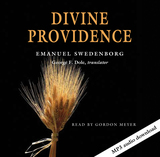
Divine Providence is one of the major works of the Enlightenment scientist and religious seer Emanuel Swedenborg. It provides a coherent and satisfying solution to what has been called “the problem of evil”: How are God’s goodness and power reconcilable with evil’s presences in the larger world and in the human mind and heart? By tackling an array of issues that commonly undermine belief in God, including war, suffering, and inequality—and by revealing the wise and loving laws that lie hidden behind these seemingly senseless phenomena—Divine Providence aims to restore our faith in the meaningfulness of the world. Despite its universal focus, Divine Providence is also a highly practical book on the personal level, demonstrating how we can put aside negative attitudes and behaviors and grow into positive thought and action.
The New Century Edition of the Works of Emanuel Swedenborg is a modern-language, scholarly translation of Swedenborg’s theological works. The series’ easy-to-read style retains the dignity, variety, clarity, and gender-inclusive language of Swedenborg’s original Latin, bringing his thought to life.
This portable edition contains the text of the New Century Edition translation, but not the introduction, annotations, or other supplementary materials found in the deluxe editions.
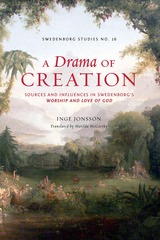
The Worship and Love of God is one of the most unusual writings of Swedish scientist and theologian Emanuel Swedenborg (1688-1772). A "poetical novel," it dramatizes the Creation and examines the life of Adam and Eve as the first truly united couple. Considered Swedenborg's last work before he embarked on his visionary period, the manuscript was left unfinished by its author and published only after his death.
Inge Jonsson, one of the world's leading scholars on Swedenborg's works, offers a scholarly look into a neglected literary achievement. He examines this unique work from the perspective of sources and influences. The literary genre f hexaemeron, ancient and modern philosophy, and scientific discoveries in the seventeenth and eighteenth centuries come into play in Swedenborg's richly imagined and beautifully articulated world. Yet The Worship and Love of God also offers an intriguing glimpse into Swedenborg's future as a biblical exegete and revelator.
READERS
Browse our collection.
PUBLISHERS
See BiblioVault's publisher services.
STUDENT SERVICES
Files for college accessibility offices.
UChicago Accessibility Resources
home | accessibility | search | about | contact us
BiblioVault ® 2001 - 2024
The University of Chicago Press









